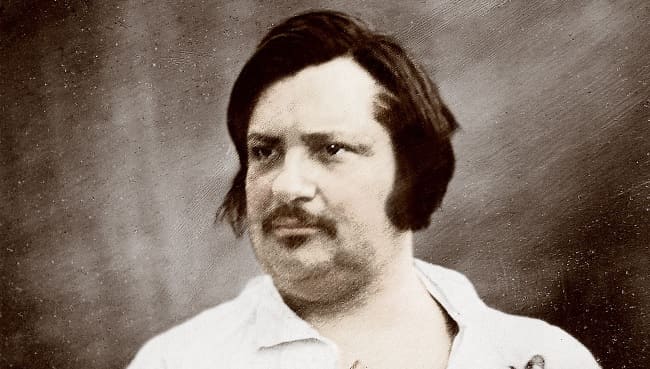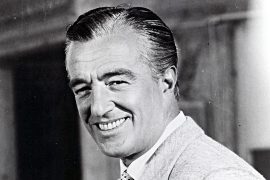The French writer is considered one of the most important novelists in world literature. Honoré de Balzac is the founder of the sociological novel in which people, milieu and social classes are described. This is what his main work “La Comédie Humaine” (1829-1854), in German “The Human Comedy”, which has remained in fragments, stands for. His works are characterized by precise observation, analytical mind and exact description, which gives an apt picture of the restoration society. Balzac was an extraordinarily prolific writer with an emphasis on the novelist. In 20 years he created almost 100 novels and various essays, short stories and dramas…
Honoré de Balzac was born in Tours on May 20, 1799, the son of a lawyer.
Balzac had an unhappy childhood. In the first four years of his life he was cared for by a wet nurse. From the age of 7 to 14 he attended a strict convent school in Vendôme. Until 1816 he lived in Paris in a boarding school. At his father’s request, Balzac began studying law in Paris in 1816. He earned his living as a clerk in a lawyer’s office. But he dropped out of college to make a living as a writer. He published his first trivial novels under various pseudonyms, which, however, remained without public effect. They earned him a meager living.
At the age of 23 he met the 45-year-old Madame de Berny, who remained his maternal lover for years and who influenced his work. In 1827 he gave up his work as a publisher and print shop owner due to bankruptcy. He only got rid of the resulting debts shortly before his death. Two years later, in 1829, the first literary success came with the work “Physiologie du Mariage”, in English “Physiology of Marriage”. However, the cynicism expressed in it and his rational view of marriage were received as offensive. His novel “Le dernier Chuons ou la Bretagne en 1800” (1829), which was nevertheless crowned with success, was also understood as a nuisance “La Comédie Humaine” was ranked.
This also brought about the notoriety of Honoré de Balzac, who ennobled himself in 1829. In 1832 he ran unsuccessfully for the French Parliament and in 1848 and 1849 for the Académie Française. From 1832 Balzc had a lively correspondence with the Polish Countess Evelina Hanska-Rzewuska. Shortly before his death in 1850 and after only brief personal encounters, they married. Balzac was an extraordinarily prolific writer with an emphasis on the novelist. In 20 years he created almost 100 novels and various essays, short stories and dramas. Balzac’s literary work is considered a realistic depiction of society in the Restoration period. Its characteristic is the people and their milieu described with an analytical mind. In this, Balzac distinguishes himself as an exact observer.
The 91 works published between 1829 and 1850 are summarized in his main cyclical work “La Comédie Humaine”. In an introduction, he justifies this key work with his idea that the human types can be divided in relation to their social characters, just as there are species in the animal kingdom. He drew on the ideas of the scientist Jean Baptiste de Lamarck and the philosopher Étienne Geoffroy Saint-Hilaires. Balzac intended, as he once put it, to “carry a whole world in one’s head”. He paid particular attention to how chance and the human spirit work together in social connections. “La Comédie Humaine” is divided into moral, philosophical and analytical studies.
The studies of manners contain most of the already completed novels, in which Parisian citizens, country life, military, province, private life and politics are discussed. For his main work, Balzac planned to characterize 2,000 figures from different social classes – from nobility to criminals. Ultimately, the work was never finished – it was planned to have 135 pieces – but Balzac was able to fulfill two-thirds of his project, in which he accommodated 90 novels and short stories in it. All works are characterized by the excellent description of the individual types and the milieu studies.
The best-known novels include “Eugénie Grandet” (1833), La Recherche de l”absolu (1834), dt. “The Search for the Absolute”, “Le Père Goriot” (1834-1835), dt “Father Goriot”, “Illusions Perdues” (1837-1843), in German “Lost Illusions”, or “La Cousine Bette” (1846), in German “Cousin Lisbeth”. Honoré de Balzac was already very popular with readers and critics during his lifetime. He was a role model for many subsequent French novelists. The naturalists in particular, with their experimental style of writing, appropriated Balzac’s sociological-realistic approach. Some of his works found their way into film art, such as “Eugénie Grandet”.
His other important works include “La Peau de chagrin” (1831), in German “The Chagrin Leather”, “Le Lys dans la vallée” (1835-1836), in German “The Lily in the Valley”, ” César Birotteau” (1834-1837), “Le Curé de village” (1839), in German “The country priest”, the stories “Contes drolatiques” (1832, 1833 and 1837), in German “Toddler stories”, the Drama “Vautrin” (1839) and his correspondence with Evelina Hanska-Rzewuska, “Lettres à l”étrangère” published posthumously in 1906.
Honoré de Balzac died in Paris on August 18, 1850.
What should one read of Balzac?
The most beautiful works of Balzac in thoroughly revised translations and with competent introductions. Seven novels: ‘The Talisman or The Shagreen Leather’, ‘Father Goriot’, ‘Eugénie Grandet’, ‘Lost Illusions’, ‘Glory and Misery of the Courtesans’, ‘Vetter Pons or The Two Musicians’, ‘Tante Lisbeth’.
How many works does Honoré de Balzac’s human comedy include?
The human comedy includes both essays and realistic novels, short stories, short stories, 25 unfinished works but also 8 early works written between 1822 and 1825. By the time of his death, Balzac had completed 91 of the 137 novels and stories in his entirety.
How did Honore de Balzac die?
Date of death: August 18, 1850
Where is Balzac?
Located in the heart of the former village of Passy, the Maison de Balzac is the only Parisian residence of the writer that has survived to this day. In this house on the slopes of Passy, Balzac wrote his “Comédie humaine”.
Who wrote the human comedy?
Honoré de Balzac
When did Honore de Balzac die?
Place of death: Paris, France





